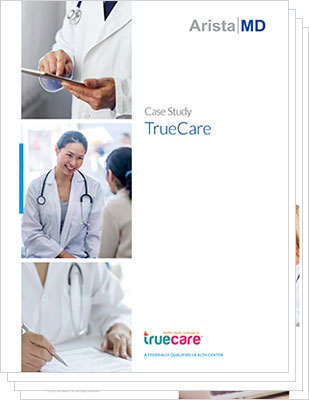Like many non-profit Federally Qualified Health Centers (FQHC) that work with underserved patient populations, TrueCare faces significant challenges in obtaining specialty care for its patients. Reasons that vulnerable patients – a group that includes the elderly, rural residents and immigrants- experience difficulty accessing specialty care include a scarcity of specialists who accept Medicaid due to low reimbursement and patients’ own difficulty in arranging childcare and/or transportation. This leads to long wait times for appointments, reduced access to care and deteriorating health for Medicaid patients unable to obtain needed specialty care.
Read more about how TrueCare solved significant issues in access to specialty care for their safety net patient population through the AristaMD platform.
Support for the Transition to Value-Based Care

How is the VBC payment model changing?
Value-based care is a trending topic and an industry buzzword. Value-based care payment models emphasize quality over quantity of care. Providers are rewarded for improving:
- Health outcomes
- Patient satisfaction
While CMS and other payers incentivize primary care providers to raise the overall quality of care by rewarding providers for efficiency and efficacy. The programs offer a few actionable steps to make value-based care a reality.
How can a provider tangibly deliver better, more efficient, and more effective care?
Truly, the answer is as simple as eConsults. eConsults are proven to save patients money and reduce the cost of care for both providers and payers.
eConsults serve as a preventive measure in specialist backlogs and worsened health outcomes resulting from delayed patient care. Additionally, eConsults improve the accessibility of quality care to those in lower-income, rural and other underserved patient populations.
What is value-based care?
While almost everyone working in healthcare today is familiar with the phrase “Value-based Care”, it’s important to articulate a common definition.
In 2006, Michael Porter and Elizabeth Teisberg explained the value equation as: Value equals quality divided by cost. This definition of value-based care has evolved from the Porter-Teisberg definition to describe the payment model or form of reimbursement which ties payment for care to the quality of care provided. This form of reimbursement has emerged as an alternative and potential replacement for fee-for-service reimbursement, which pays providers retrospectively for services delivered based on bill charges or annual fee schedules.

